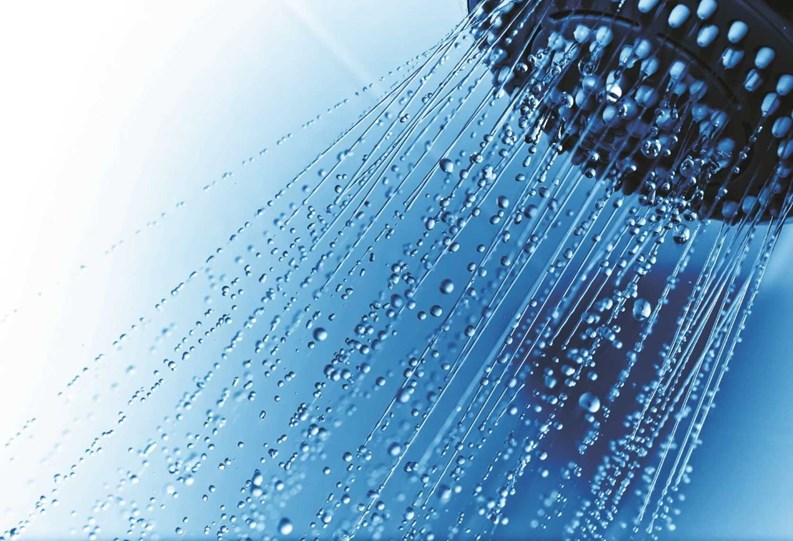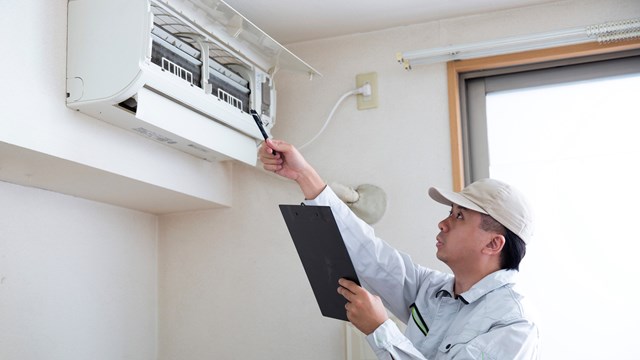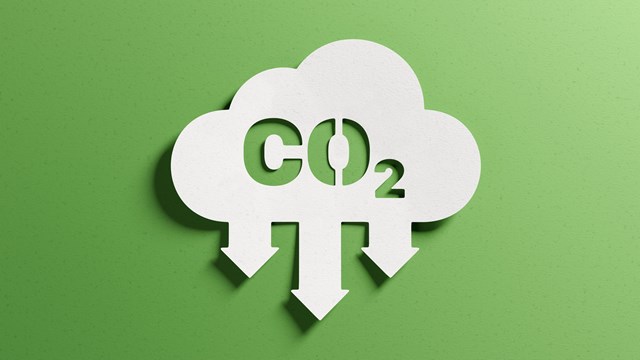With the green movement in full swing across the country, it is not surprising that incorporating energy-saving efficient measures has trickled into condominium development and management. Today, many buildings in New England pride themselves for having a variety of eco-friendly features ranging from green roofs and the use of sustainable materials to recycling on-site.
Take for example the Macallen building in downtown Boston which boasts the title of being the first gold-level Leadership in Energy and Environmental Design (LEED) certified condo development in the city. Gold is the second highest certification available from the U.S. Green Building Council (USGBC) system which assigns points in five categories: Sustainable Sites, Water Efficiency, Energy and Atmosphere, Materials and Resources and Indoor Environmental Quality.
The green complex includes an HVAC system that filters air from the outside, so it is not recirculated; bamboo flooring, which is sustainable wood; insulation from recycled blue jeans and a massive green roof, says realtor Elizabeth Guenard from Boston-based Broadway Village Real Estate, which is associated with the Macallen Building.
“The roof helps to insulate the building, produces oxygen, reduces city ambient heat and provides an ecosystem to local wildlife,” Guenard says. “The building was different, it was a new project that the developer wanted to explore. It's a choice to go green and what the city certainly needs.”
While not all residential condominium buildings are built 'green' from scratch, there are numerous national and state wide energy efficiency, energy conservation and sustainability programs available to residents. These programs offer rebates to help offset the initial costs of implementing the green products and technologies or even a discount off monthly utility bills, which can lead to big savings for the association and its residents.
Seeking and Implementing Incentives
With hundreds of incentive programs out there, it may seem like a daunting task finding one that fits the needs and goals of residents and the community. Seth Wheeler, communications administrator for New Hampshire Electric Cooperative in Plymouth, New Hampshire, says that after determining which companies supply your utilities, checking out the utilities’ websites or calling and speaking with a representative will reveal a host of programs. Most utility companies have an entire section on their web page designated to energy efficiency he says.
While individual homeowners can take on energy-efficiency projects more freely, installing an association-wide development such as solar panels will most likely require the consensus of the majority of the community and the responsibility of cost of installation and upkeep will differ, depending on how many residents agree.
Stephen Marcus, a partner at the law firm of Marcus, Errico, Emmer & Brooks in Braintree, Massachusetts, says, “In Massachusetts, Massachusetts General Laws Chapter 183A section governs improvements. It states as follows:
Section 18. (a) If fifty per cent or more but less than seventy-five per cent of the unit owners agree to make an improvement to the common areas and facilities, the cost of such improvement shall be borne solely by the owners so agreeing.
(b) Seventy-five per cent or more of the unit owners may agree to make an improvement to the common areas and facilities and assess the cost thereof to all unit owners as a common expense, but if such improvement shall cost in excess of ten per cent of the then value of the condominium, any unit owner not so agreeing may apply to the superior court of the county in which the property is located, on such notice to the organization of unit owners as the court shall direct, for an order directing the purchase of his unit by the organization of unit owners at fair market value thereof as approved by the court. The cost of any such purchase shall be a common expense.”
While conducting association-wide improvements can be a lengthy and more involved process than a unit owner may undertake, experts agree that it is a worthwhile project. “An association has the unique opportunity because it's a collective of individuals who can make decisions for their own fate as that association,” says Jim O'Reilly, director of public policy at the Northeast Energy Efficiency Partnerships in Lexington, Massachusetts. Updating common exterior or hallway lighting, pool or spa pumps and heating and cooling equipment can provide great financial benefits to the association, he says. “If there was an interest amongst the members and officers in an association, they can also obviously look to how those energy-efficiency measures could be funded or incentivized through the programs available in each state and those could end up to be some big saving measures,” he adds.
National Programs
The federal government offers many programs and incentives that encourage energy efficiency while simultaneously expanding opportunities for home ownership. One such program is the 203(k) program which is administered through the Federal Housing Administration (FHA), which is part of the Department of Housing and Urban Development (HUD). The program is not for existing homes but rather for individuals who are looking to buy a home. “It's a popular program, a lot of people have been taking advantage of that with the low interest rates on mortgages, many people find that attractive,” says Rhonda Siciliano, public affairs officer for the New England Region of HUD in Boston. “The 203(k) program is for someone who is purchasing a home that needs work done to it. They will buy a home that needs some work and while they are making improvements to the home, they are also making it more energy efficient in the process.”
Unlike single family homes, however, the program has certain specifications for condominium units including rehabilitation that is limited to the interior of the unit only and only the lesser of five units per condominium association, or 25 percent of the total number of units, can be undergoing rehabilitation at any one time, according to the HUD website. All projects must be approved by the FHA.
Federal tax credits are also available to residents who have qualifying energy-efficient products. “Consumers can use an Energy Star search engine for special offers or rebates locally available,”says Dale Kemery, press officer at the U.S. Environmental Protection Agency (EPA) in Washington D.C. “Not all Energy Star qualified products qualify for a tax credit, but there are tax credits in effect through 2016 on geothermal heat pumps, solar panels, solar water heaters, small wind energy systems, and fuel cells.”
Energy Star is a joint program of the EPA and the Department of Energy that labels products that are energy efficient can help reduce greenhouse gas emissions. “The Energy Star label can be found on products across more than 65 categories, including appliances, lighting, heating and cooling equipment and consumer electronics. Products that earn the label deliver all the features and functionality of standard products, while allowing purchasers to save energy, save money and help protect the climate,” says Kemery. He adds that a typical household spends more than $2,100 a year on energy bills but Energy Star products can produce savings of one third or about $700. More information can be found on www.energystar.gov.
Two other databases already exist to help locate funding sources:
• The Database of State Incentives for Renewables & Efficiency, www.dsireusa.org, is a project of the N.C. Solar Center and the Interstate Renewable Energy Council with funding from the U.S. Department of Energy. It is organized by state, and within each state by program type.
• The U.S. Department of Energy’s own website has a section on tax credits, rebates, and savings at http://energy.gov/savings.
Private-Sector Sources
Many utility companies in New England offer energy-efficiency incentive programs for their customers. The programs and requirements vary by state. “In each of the New England states, there is some kind of a ratepayer funded, public program for residents of that state to be able to upgrade the energy efficiency of their home, whether it's a single family, attached home or a condo,” explains O'Reilly. “So, I'll take an example of Massachusetts. Electric and gas ratepayers pay a very small piece of their energy bill, a percentage of that every month into a central fund, that's mandated under what was known as the Green Communities Act of 2008. Essentially that act expanded programs that had already been in existence for over a decade. But it has set up a system of a centrally-administered, jointly run, and coordinated set of energy efficiency programs, that the electric and gas utilities administer.”
But before replacing all your appliances and equipment, O'Reilly strongly recommends an energy audit for both individual unit owners as well as the entire building. A professional consultant will conduct the audit and reveal any areas that could use an upgrade. “They can come in with individual watt meters and tell you how much your appliances might be drawing. They can do an assessment of your lighting and usually say to you with some degree of certainty, almost to the kilowatt hour, here's what you could save potentially by replacing some of these units and here's what's available to you to help you in terms of some of these incentives,” he says.
After an audit and some research on what is offered through your utilities, O'Reilly says,“what we usually advise people to do when they're looking at how to improve the efficiency of their residence, is focus on three areas: building envelope, lighting and appliances.”
In Connecticut, customers of the Connecticut Light and Power Company (CL&P) are able to obtain and sell renewable energy credits. A generator installed behind a customer's meter records each kilowatt hour and after 1,000 kWh, one credit is obtained. A wide range of projects can qualify from solar panels to fuel cells under a 15 year, long-term contract. CL&P provides detailed instructions and explanations on their website: http://www.clp.com/Home/SaveEnergy/GoingGreen/Renewable_Energy_Credits/?MenuID= 4294985155.
The New Hampshire Electric Co-op offers a variety of rebates and incentive programs for engaging in energy efficient projects such as air sealing and adding insulation, installing energy efficient appliances and energy efficient lighting. “Our most popular amongst residential customers is what's called the Home Performance with Energy Star Program, which is the program that pays for or provides a free energy audit,” says Wheeler. “ So, an energy auditor would go into your house, do what's called a blower door test, see where there's air leaking out of your home. They would check your insulation, they would check what kind of appliances do you have, what kind of lighting do you have, and would make recommendations then based on that audit.”
He adds that if after, the audit, homeowners choose to pursue the suggestions, the Electric Co-op offers up to $4,000 in incentives to go along with the improvements. “It's really quite an easy way to tighten it up and save a lot of energy,” he says.
With a variety of green incentive programs at their disposal, residents, trustees, board members and property managers have the resources and financial support they need to implement eco-friendly products and policies in their association, saving money and protecting the environment.
Maggie Puniewska is an editorial assistant at New England Condominium and other publications.







Leave a Comment